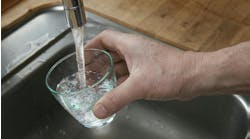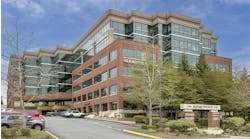WASHINGTON — The Energy Department has announced 12 projects to develop innovative heating, cooling and insulation technologies as well as open source energy efficiency software to help homes and commercial buildings save energy and money. These projects will receive an approximately $11 million Energy Department investment, matched by about $1 million in private sector funding.
“Energy efficient technologies — from improved heating and cooling systems to better windows and lighting — provide one of the clearest and most cost-effective opportunities to save consumers money while curbing greenhouse gas pollution,” said Assistant Secretary for Energy Efficiency and Renewable Energy David Danielson. “User-friendly tools that quickly and cheaply analyze energy use will also help businesses and homeowners make better use of those technologies to save energy and lower their utility bills.”
DOE announced about $6 million to nine projects that will develop new energy efficient building technologies, including HVAC systems and building insulation. The projects will also help curb emissions of HFC refrigerants, which are greenhouse gases. In the United States, emissions of HFCs are expected to nearly triple by 2030, and double from current levels of 1.5% of greenhouse gas emissions to 3% by 2020.
Sandia National Laboratories and United Technologies Research Center will get $750,000 for a project to help demonstrate a rotating heat exchanger technology for residential HVAC systems. Already demonstrated in commercial buildings, this heat pump could improve the cycle efficiency of HVAC systems and enable increased use of heat pumps in cold climates. This product is designed for the more than 115 million homes in the U.S., and assuming 50% market penetration this technology starting in 2018 could reduce annual energy expenditures by $500 million dollars, rising to $7.3 billion dollars by 2030.
A private firm, Thermolift, along with Oak Ridge National Laboratory, Stony Brook University and National Grid will receive $750,000 to help commercialize a natural gas heat pump to provide heating, cooling and hot water for homes and commercial buildings. The all-in-one unit will not use HFC refrigerants and could triple space-heating efficiency. The unit will reduce greenhouse gas emissions. The potential is huge, with up to 200% efficiency improvements for space heating, and 150% efficiency improvements for water heating and space cooling.
The Energy Department also announced up to $5 million to three projects — led by the University of California, Virginia Tech and Carnegie Mellon University — to develop open source software that helps building owners and operators measure, monitor and adjust lighting, HVAC and water heating energy use to save energy without compromising performance. According to a study by the Pacific Northwest National Laboratory, commercial building owners could save an average 38% on heating and cooling bills by installing energy control systems.
Commercial and residential buildings use nearly 40% of the total energy consumed in the United States each year and produce more than 40% of the nation’s carbon pollution. According to the Energy Information Administration, about 48% of energy consumption in U.S. homes in 2009 was for heating and cooling, down from 53% in 1993. While better insulation and more efficient windows and equipment helped precipitate this decline, the projects announced are focused on furthering these savings.

